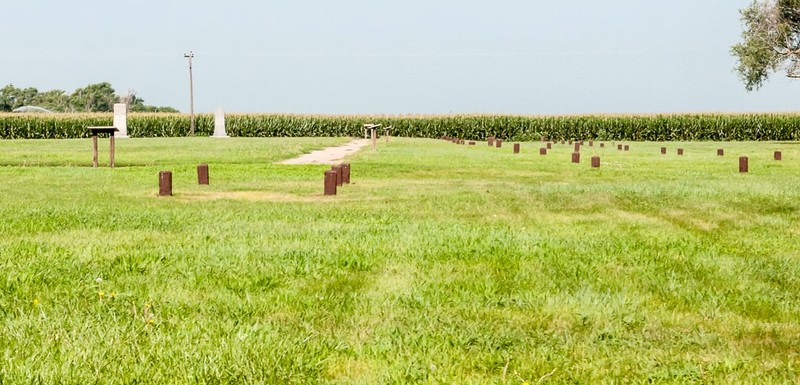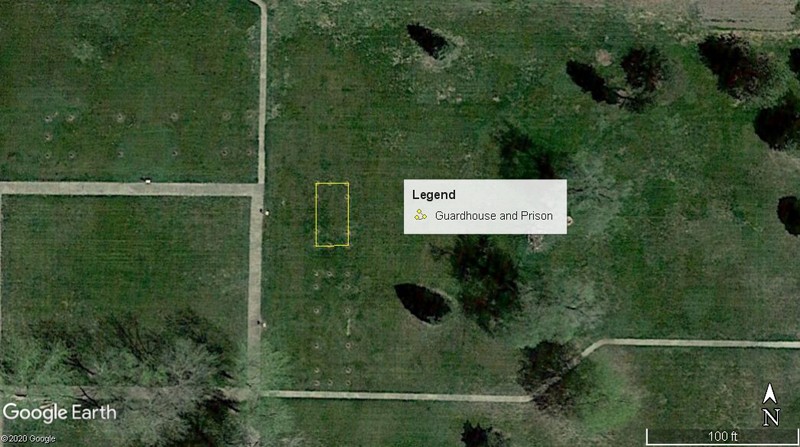Fort Kearny Guardhouse and Prison
Introduction
Text-to-speech Audio
Images
Posts on the grounds outlining the buildings

Aerial view of the outline for the guardhouse and prison

Drawing of the fort showing the location of the guardhouse

Backstory and Context
Text-to-speech Audio
By the end of 1859, a frame guardhouse, a two-story soldiers' barracks, and quarters for the post commander were added around the parade ground. Archeological excavations in 1960 and 1961 revealed that modern picnic trash pits had already damaged the archaeological remains and it was feared that the structural evidence might be destroyed in the near future by vandalism, so a complete excavation was completed.
The building was found to be defined by a rectangular excavated floor pit and a short projecting entrance passage which connected with a gravel walkway running between the rows of stately cottonwoods lining the northern side of the parade ground. Two interesting specimens recovered from the floor of the structure are a Pond's Extract bottle bearing an 1846 patent date, and a piece of lime solidified in the form of a tub. Lime was used extensively in the military sanitation of the Fort Kearny period. Military insignia, glass, nails, and other refuse were also recovered. Evidence-based on the location of this feature suggests that it is the 1852 guardhouse, but it is difficult to reconcile the central sub-floor depression and its 8 by 15-foot dimensions with the historical map data concerning this structure. The lack of positive evidence of walls beyond the limits of the floor pit may indicate that poor preservation prevents an accurate archaeological delineation of the building.
The 1864 post-inspection notes that the guardhouse is "a one-story house twenty-two feet north - and on a line with the Soldier's Quarters. Is used as a guardhouse, is in good condition, but the floor although good is not sufficiently strong, several prisoners having escaped within the last six months by cutting through the floor. Would respectfully recommend the laying of the floor of two-inch plank."
Sources
Kimball, Beverly M. Fort Kearny - Guardian of the Plains. Buffalo Tales - Buffalo County Historical Society, vol. 11, no. 6. Published June 1st, 1988.
Roger T Grange Jr, “Digging at Fort Kearny,” Nebraska History 44 (1963): 101-121
Mantor, Lyle E. "The History of Fort Kearny." Ph.D. diss., 1938.
Post Inspection, Fort Kearny, N.T. June 28, 1864.
